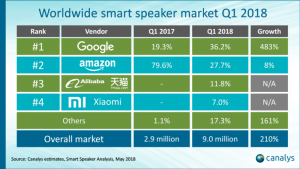All digital marketing is inherently global digital marketing!
You can’t stop those electrons from traveling to other countries, even if you wanted to. While your target audience might not be global, you still need to manage global digital marketing.
Here’s how Sarah Jones, from Luxury Daily frames the imperative to manage global digital marketing:
From varying digital habits to disparities in infrastructure, brands cannot expect that their framework for the United States will be effective if carried over to other countries. Even if a brand is not actively seeking global consumers, having an online presence means they are on an international stage.
Why you need to manage global digital marketing even if you’re not a global brand?
Even if you’re not targeting visitors from outside your particular country, you need a global strategy for 2 reasons:
- Global visitors contribute significantly to your SEO strategy and goal conversion
- A mistake that insults a particular region can create a powerful negative if social media posts go viral
Impact on SEO
As a digital marketing agency, Hausman & Associates focuses on serving clients in the US. But, take a look at my Google Analytics (click to enlarge) and you’ll find my reach extends much further than the US.
Notice, my second largest source of visits is India. Indian visitors also spend more time on my site. Hence, even if I’m not interested in serving clients in India, I need them as they contribute positively to my SEO strategy.
Also notice the goal completion rate for visitors from different countries. The US features the highest goal completion, but contenders include South Africa and Kenya. Hence, I need these folks to build my business, as their engagement spreads word of my work to unexpected places I might not reach otherwise.
Cultural mistakes
While it isn’t a global mistake, a high-ranking Chrysler exec tweeted that he expected people in the motor city would know how to drive. The backlash was immediate and negative, forcing the company to make a public  apology and remove the offensive tweet. Definitely, the exec misunderstood the culture he’d been dropped into.
apology and remove the offensive tweet. Definitely, the exec misunderstood the culture he’d been dropped into.
This mistake cost Chrysler, not only in term of potential sales, but poor relations with workers who lived in Detroit. To compound the problem, this mistake is shared over and over, while people like me use it as an example of what NOT to do, extending the life of the original tweet indefinitely.
The take-away from this is to think globally as you craft content. Avoid disparaging comments about ANY culture, whether global or not. Also, put yourself in your readers’ shoes by avoiding content others might find offensive to their culture, religion, leaders, etc. Remember, it’s one thing for us to make fun of ourselves and quite another for someone else to make fun of us.
Targeting global companies
But, what if targeting global companies is part of your global digital strategy?
Well, then you have to go farther than just avoiding being offensive. You need to actively solicit visitors from other cultures.
First, let me diverge a little here by pointing out the difference between country and culture.
A country is a body of land with borders defining its territory from that of its neighbors.
A culture is a much deeper, broader group that extends across national borders. A culture commonly shares one or more of these attributes: values, religion, family structure, behaviors, cultural symbols, etc.
From my perspective, when you target global companies, you’re really dealing with cultural differences to a greater extent than country differences, with the exception of structural elements like logistical, financial, and legal requirements.
Now that we have that understanding, we can move forward.
Here’s what Gail Horwood told McKinsey about being a global brand in digital marketing
Social media is an example of something that truly requires a global and local strategy, because social makes any communication global. Setting a global communication strategy requires some pretty foundational things: content management, digital asset management, new production models that help us create and then leverage and syndicate content globally.
Think digitally, act locally
Not every culture responds the same way to the same campaigns. For instance, in the US, social is a way to build community, create a brand image, and drive customers to your website. In China, however, over 46% of sales come from social.
Speaking of social networks, Facebook is the ‘big gun’ in the US, but other networks dominate overseas, such as QQ and Baidu.
And, the digital divide is real due to a combination of infrastructure and evolution. For instance, many countries have leapfrogged technology rather than evolving in the same way as Western cultures. Mobile is ubiquitous in the East, while laptops and desktops still retain a stronghold in the West.
Thus, developing a deep cross-cultural competency is critical to manage global digital marketing, or any marketing in general. Here’s a good book for understanding how to build such competencies.
Global language
Don’t forget that different cultures speak different languages and, while English may dominate in much of the world, native speakers still prefer their own language for search.
Anne Kennedy has this to say about global SEO:
Global SEO isn’t for the faint-hearted, nor can it be accomplished successfully on the cheap. Multi-country multi-language campaigns are complex and require specifically dedicated resources.
Global SEO is a combination of choosing the right search engine (Google dominates in western cultures, but other search engines dominate in other locations) and choosing the right keywords in the local dialect (not just language). For this, you’ll likely need to work with native speakers to make the right choices.
On my site, it might be enough to include Google Translate so readers can view my content in their preferred language, but a company choosing to target different regions might develop specific websites for each, taking into consideration both language and cultural differences. Think about doing the same with your social networks, especially Twitter, to avoid confusion with multiple languages.
Colors have meaning
In the US, wedding dresses are white, in Japan, they are red. White is the traditional mourning color in Japan.
Colors (and symbols, as well) have deep cultural meanings that don’t often extend cross-culturally. Think of all the criticism Proctor and Gamble faced (and still faces) for their logo, which some interpret as a sign of the devil.
Digital & Social Articles on Business 2 Community(99)
Report Post








